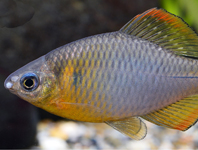Abstract
Paramathes Boursin, 1954 is a Noctuinae genus closely related to Xestia Hübner and distributed in high mountain regions of West and Central China. Paramathes and the Xestia—complex (the Palaearctic and Oriental species have never been revised) show a lot of synapomorhies, which indicate the close relationship, particularly in the male genitalia: lanceolate or spatulate uncus, the presence of apical process and pseudopollex on the valvae, carinal thorn or bulb. However, these characters are not present all in most of the Xestia; e. g. most of them have long, narrow uncus, no apical process on the valvae, absent carinal thorn or bulb; or are without being combined these. In the females, the differences are more conspicuous; the postero - bilateral lobes of the strongly sclerotized antrum are very large in Paramathes (these are not present in most of the Xestia, or much smaller), the corpus bursae short and ample, the appendix bursae prominent. The autapomorhies of the Paramathes are the Eugnorisma—like forewing pattern, the slightly dentate, ribbon shaped sclerotization extending from the carina onto the basal section of the vesica in the males, while those are in the females the very large postero - bilateral lobes of the strongly sclerotized antrum and the presence of the four signa in the corpus bursae. A revision of Paramathes was recently published by Varga et al. (2015), who included in the genus five species, such as P. tibetica Boursin, 1954, P. perigrapha (Püngeler, 1900), P. amphigrapha Boursin, 1954, P. pulchrisigna Boursin, 1954, P. xestioides Varga, Ronkay, Ronkay, Gyulai, 2015 and one subspecies P. perigrapha simonyisandori Varga, Ronkay, Ronkay, Gyulai, 2015. Paramathes daochengi was described a year later by Saldaitis & Gyulai (2016). During a lepidopterological expedition to the northwestern part of China’s Sichuan Province in June of 2019, a short series of Paramathes specimens (Figs 1, 2) similar to Paramathes daochengi Saldaitis & Gyulai, 2016 (Fig. 3) was collected. However, after examining their genitalia by second author, it was concluded by the authors, that they belong to an undescribed species which is described below.
References
Boursin, Ch. (1954) Die „Agrotis”- Arten aus Dr. h. c. Höne‘s China Ausbeuten, Beiträge zur Kenntnis der Agrotidae-Trifinae II. Die Gattungen Hemiexarnis Brsn., Höneidia n. gen., Rhyacia Hb., Chersotis B., Eugraphe Brsn., Sineugraphe n. gen., Palaeamathes n. gen., Paramathes n. gen., Paraxestia Hps. Bonner zoologische Beiträge, 5 (3–4), 213–309. [in German]
Fibiger, M. (1997) Noctuinae III. Noctuidae Europaeae. Vol. 3. Entomological Press, Sorø, 418 pp.
Kononenko, V.S. (2010) Micronoctuidae, Noctuidae: Rivulinae—Agaristinae (Lepidoptera). Noctuidae Sibiricae. Vol. 2. Entomological Press, Sorø, 475 pp.
Lafontaine, J.D. & Mikkola, K. (1987) Lock-and-key system in the inner genitalia of Noctuidae (Lepidoptera) as taxonomic character. Entomologiske Meddelelser, 55, 161–167. [in Finnish]
Püngeler, R. (1900) Neue palaearctische Macrolepidopteren. Deutsche Entomologische Zeitschrift. Gesellsschaft Iris zu Dresden, 12, 95–106.
Saldaitis, A. & Gyulai, P. (2016) A new Paramathes Boursin, 1954 (Lepidoptera, Noctuidae) species from China. Zootaxa, 4173 (6), 596–600.
https://doi.org/10.11646/zootaxa.4173.6.7
Varga, Z., Ronkay, G., Ronkay, L. & Gyulai, P. (2015) Noctuinae II. The Eugnorisma-Eugraphe generic complex. A Taxonomic Atlas of the Eurasian and North African Noctuoidea. Vol. 8. Heterocera Press, Budapest, 362 pp.


